The most common cuts & transitions used in films.
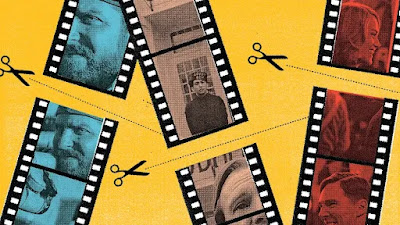
In post-production, the process of film editing and video editing, a cut is an abrupt, but usually trivial film transition from one sequence to another. It is synonymous with the term edit, though "edit" can imply any number of transitions or effects. The cut, dissolve and wipe serve as the three primary transitions. The term refers to the physical action of cutting film or videotape, but also to a similar edit performed in software; it has also become associated with the resulting visual "break".
Types of Cuts :
1. J-cut and L-cut
2. A Match cut
3. A jump cut
4. Cutaway
5. A cross-cut/Parallel editing
6. Cutting on action
•An L-cut and the J-Cut :
A J-cut and L-cut are film editing techniques that involve the use of overlapping audio in order to create a smooth transition between two shots.
A J-cut refers to a transition where the audio from the next shot starts before the corresponding visual is shown on screen. For example, in a scene where a character is speaking on the phone, a J-cut might be used to show the character dialing the phone before the shot of the person they are speaking to is shown. The audio of the person they are speaking to begins before the visual of the person is revealed.
A L-cut, on the other hand, is the opposite of a J-cut. It refers to a transition where the visual of the next shot starts before the corresponding audio. For example, in a scene where a character is walking towards a door, an L-cut might be used to show the character reaching for the doorknob before the sound of the door opening is heard. The visual of the action starts before the sound of the action.
Both J-cut and L-cuts are used to create a more seamless and natural transition between shots, and to help create a sense of continuity in the film.
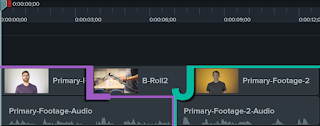
•A jump cut :
A jump cut is a film editing technique where there is a sudden jump in the continuity of the action or scene, typically caused by the removal of one or more frames. This creates a jarring, disorienting effect and can be used for a variety of purposes, such as to indicate a passage of time, to create a sense of unease or confusion, or to draw attention to a particular moment or action.
An example of a jump cut can be found in the film "Breathless" (1960) by Jean-Luc Godard. In this film, the jump cut is used frequently to create a sense of disorientation and to break the continuity of the action, drawing attention to the character's inner thoughts and emotions. In one scene, a character runs after another character and the scene cuts back and forth between two shots of the same action, but in different locations, giving the impression that he is moving forward and backward at the same time, creating a sense of confusion.
A jump cut is not always used to create a sense of disorientation but it could be used to create a sense of humor or to bring attention to a particular point in a scene.
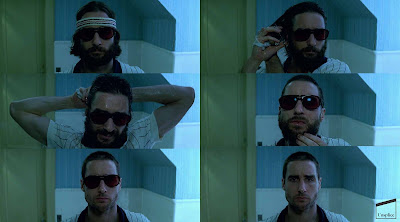
•A cutaway :
A cutaway is a film editing technique where the action in the main shot is briefly interrupted by a shot of something else, such as a reaction shot, a piece of dialogue, or an object. This technique is used to provide additional information or to create a transition between shots. Cutaways can also be used to establish a location, provide a visual representation of a character's thoughts or feelings, or create a sense of continuity between shots.
For example, in the film "The Shawshank Redemption" (1994) directed by Frank Darabont, the main character, Andy Dufresne, is locked in a prison and the film uses cutaways to show his internal thoughts and feelings. The cutaways are used to show Andy's mental state as he listens to music or to show his longing for freedom. Through these cutaways, the audience is able to see what Andy is feeling, even though he may not express it through his actions or dialogue.
Another example is in the film "The Social Network" (2010) directed by David Fincher, the film uses cutaways to show the development of the Facebook website, and to show the passing of time, instead of showing a time-lapse, the film uses cutaways of the website being developed and the characters using it.
In general, cutaways are a versatile film editing technique that can be used to provide additional information, create a transition between shots, or create a sense of continuity.

•A cross-cut or Parallel editing :
A cross-cut (also known as parallel editing or intercutting) is a film editing technique where two or more separate actions or scenes are shown simultaneously, with the cuts made back and forth between them. This technique is used to create a sense of simultaneity, to create tension or suspense, or to show the relationship between different characters or events.
For example, the film "Jaws" (1975) directed by Steven Spielberg, the film uses cross-cutting to create suspense and tension. The film cross-cuts between the shark-attacking swimmers and the characters on a boat trying to track and hunt down the shark. The cross-cutting between the shark and the characters on the boat creates a sense of simultaneity, as well as tension and suspense, as the audience doesn't know when the shark will attack next.
Another example can be found in the film "The Godfather" (1972) directed by Francis Ford Coppola, the film uses cross-cutting to show the parallel events happening within the Corleone family and outside of it, creating a sense of simultaneity and showing how the actions of one character can affect the actions of another character.
Cross-cutting is a powerful editing technique that allows the audience to see the relationship between different characters or events, and to create a sense of simultaneity, tension, or suspense.

•A match cut :
A match cut is a film editing technique where the visual elements of one-shot are matched with the visual elements of the next shot in order to create a connection or association between the two. This technique is used to create a transition between shots, to draw attention to a particular element in the scene, or to create a symbolic or metaphorical connection between the two shots.
For example, in the film "2001: A Space Odyssey" (1968) directed by Stanley Kubrick, the famous match cut between a bone thrown into the air by a monkey and a spaceship orbiting Earth is used to create a symbolic connection between the dawn of human civilization and the space age. The bone and spaceship both represent tools of progress, and the match cut shows how one has led to the other.
Another example can be found in the film "The Empire Strikes Back" (1980) directed by Irvin Kershner, where a match cut is used to connect two different scenes. The first scene is of Luke Skywalker training with a lightsaber, and the second scene is of Darth Vader dueling with Luke. The match cut is used to connect the two scenes, showing how Luke's training is leading up to his confrontation with Darth Vader.
A match cut is a powerful editing technique that can be used to create a transition between shots, draw attention to a particular element in the scene, or create a symbolic or metaphorical connection between the two shots.
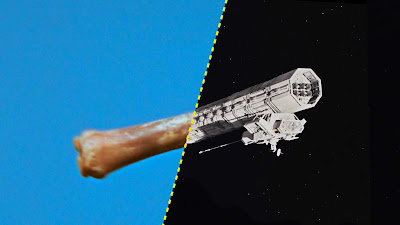
•Cutting on the action :
Cutting on action is a film editing technique where the editor cuts from one shot to another while the action in the scene is still ongoing. This technique is used to create a sense of continuity and to keep the action flowing smoothly from one shot to the next. It's often used in action sequences, fights scenes, or sports scenes to keep the audience engaged in the scene and to make the action feel more dynamic.
For example, in the film "The Matrix" (1999) directed by The Wachowskis, the film uses cutting on action extensively throughout the action sequences. The film cuts between different camera angles and shots of the characters in the middle of performing stunts and fighting, creating a sense of continuity and making the action feel more dynamic.
Another example can be found in the film "Rocky" (1976) directed by John G. Avildsen. The film uses cutting action to show the progression of the fight between Rocky Balboa and Apollo Creed. The film cuts between different camera angles of the fight, showing the punches being thrown and landed, creating a sense of continuity and making the fight feel more intense.
Cutting on action is a film editing technique that helps to create a sense of continuity, and to keep the action flowing smoothly from one shot to the next, making the scene more dynamic and engaging for the audience.
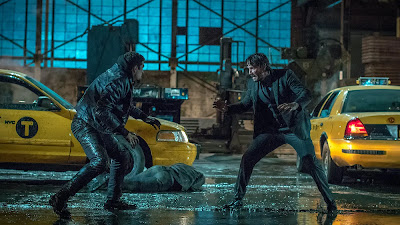
Types of transitions :
1. Fade
2. Dissolve
3. Wipe
4. Slide
5. Iris
*Fade: A fade is a transition where the first shot gradually fades to black and then the second shot gradually fades in from black. This can be used to indicate a passage of time or to transition between different moods or emotions. In the film "The Godfather", a fade is used to transition between different scenes and to indicate the passage of time. The fade is used to create a sense of continuity and to connect different parts of the story.
*Dissolve: A dissolve is a transition where the first shot gradually fades out while the second shot gradually fades in, overlapping each other. This can be used to indicate a passage of time or to connect two shots that have a thematic or symbolic relationship. In the film "The Silence of the Lambs", a dissolve is used to connect different parts of the story and to create a sense of continuity. The dissolve is used to indicate a passage of time and to connect different parts of the story.

*Wipe: A wipe is a transition where one shot is replaced by another by an object (like a line or shape) moving across the screen. This can be used to indicate movement or to create a sense of energy. In the film "Star Wars" a wipe transition is used frequently to indicate a change of scene or a change of point of view.
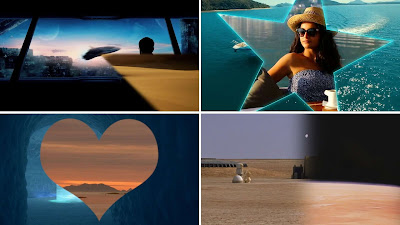
*Slide: A slide is a transition where one shot moves off the screen to reveal the next shot. This can be used to indicate movement or to create a sense of continuity. In the film "Jaws" a slide transition is used to indicate the movement of the shark and to create a sense of danger.
*Iris: An iris transition is where a shape (like a circle or square) is used to reveal or obscure one shot as the other shot appears. This can be used to create a sense of focus or to draw attention to a specific element in the shot. In the film "The Artist" an iris transition is used to draw attention to a specific element in the shot and to create a sense of nostalgia.
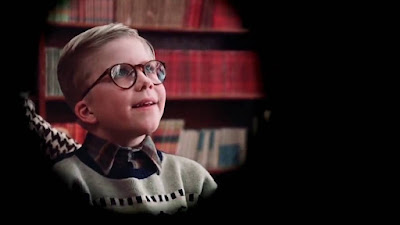.jpg)
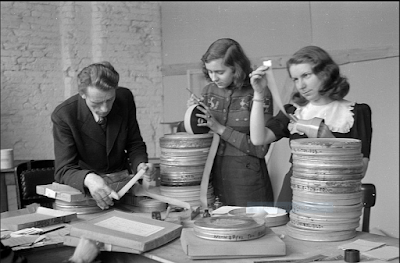
.webp)

Comments
Post a Comment